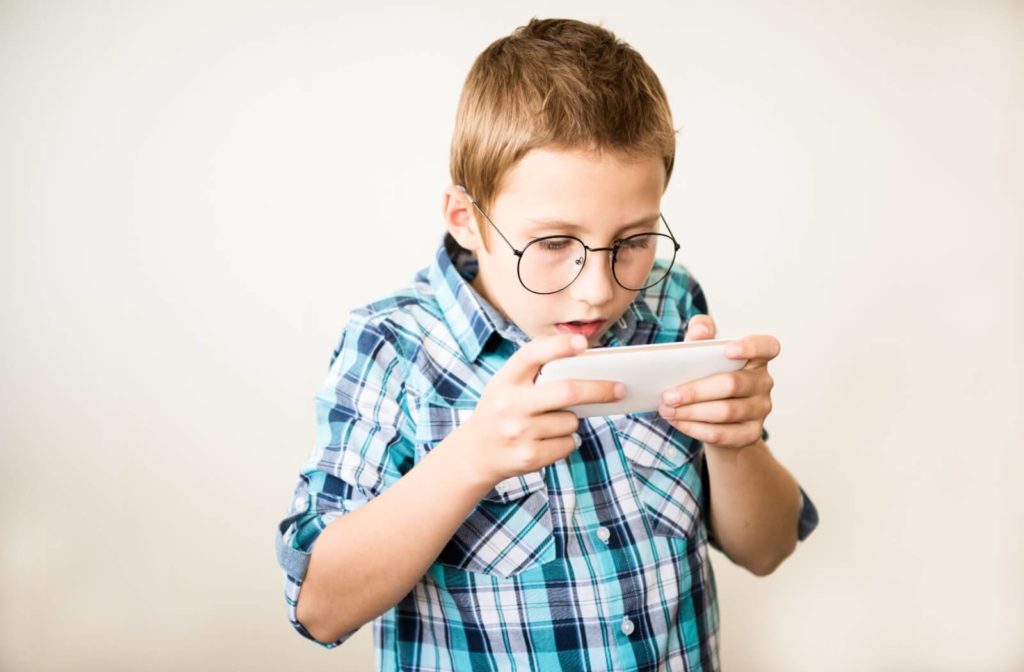Myopia is a common refractive error that affects millions of people worldwide. It’s characterized by the inability to see distant objects with clear vision. The concern and curiosity around myopia are in step with its increasing prevalence, which has been on the rise in recent decades. Unfortunately, there’s no way to reverse myopia, but there are several myopia control methods for slowing its progression and correcting the vision problems it causes.
Blurry distant vision is the most obvious cause of concern for myopia. But myopia can lead to an increased risk of vision-threatening conditions, which we’ll cover in more detail below. Early diagnosis and implementation of control methods are crucial to help prevent these complications. The fact that myopia often develops at an early age highlights a primary reason your child must see their eye doctor for all recommended eye exams.
Understanding Myopia
Myopia, or nearsightedness, occurs when the eyeball is too long relative to the focusing power of the cornea and lens. This causes light rays to focus at a point in front of the retina instead of directly on its surface, resulting in blurred vision for distant objects. It can manifest in various degrees, from mild to severe, and typically begins in childhood.
Experts estimate that half of the world’s population will be myopic by 2050. Additionally, it seems to be happening to younger children than previous generations. This staggering statistic prompts an urgent examination of myopia’s causes and strategies for effective management.
Myopia Causes
Genetic predisposition plays a significant role in myopia, so children whose parents have myopia are at a higher risk of developing myopia. Myopia can also progress faster in these children, which highlights the importance of early diagnosis.
Environmental factors can also play into an individual’s risk of developing myopia. Excessive near work, such as reading or screen time, and reduced time spent outdoors are all linked to myopia onset and progression.
Myopia Symptoms
Blurry distant vision is the most obvious myopia symptom. But other symptoms can include:
- Headaches
- Eye strain
- Squinting
- Fatigue while driving or doing things that require distant focus
Your child may not always recognize the above symptoms as unusual and cannot describe them because they may be “normal” to them. Some child-specific symptoms can include:
- Poor school performance
- Short attention span
- Holding things closer to their face
Myopia Control
Currently, there is no way to reverse myopia. Fortunately, thanks to advances in medical science, there are some excellent choices for controlling its progression.
Traditional Methods
Glasses and contact lenses are standard tools in myopia control. They provide the necessary refractive correction to allow individuals with myopia to see clearly, but they don’t address the underlying factors that drive progression.
However, specific eyeglasses and contact lens designs that correct refractive errors and help slow myopia progression are available.
Orthokeratology (Ortho-K)
Ortho-K involves wearing special semi-rigid contact lenses overnight that gently reshape the cornea, providing clear vision during the day without needing corrective lenses. These contact lenses show similar effectiveness in correcting and slowing myopia compared to eyeglasses or soft contact lenses designed for myopia control, and a large amount of research has been done on them.
Low-Dose Atropine Eye Drops
Low-dose atropine drops could slow myopia progression, but they don’t correct the blurry vision. So, atropine is best used with other corrective measures like eyeglasses or contact lenses.
Research is mixed on the best dosage for atropine eye drops. It ultimately depends on the myopia’s severity and your child’s overall eye health. Your child’s eye doctor can determine which dosage can be the most effective in their unique situation.
Importance of Early Diagnosis & Treatment
Myopia management is more than simply about giving your child clear vision. Research indicates that high myopia, an advanced form, can lead to vision-threatening complications. Those with high myopia are at an increased risk of developing glaucoma, cataracts, retinal tears, and macular degeneration. And even if prescription lenses correct the vision, these risks still exist.
Talk to Your Child’s Eye Doctor About Myopia Control
While a definitive “yes” to reversing myopia eludes us presently, the collective effort of researchers, eye care professionals, and patients is inching us closer to meaningful advances. But until that day arrives, staying updated with correction options and following lifestyle recommendations from your eye doctor can empower us on the path to clear, unhampered vision.
Call our team at Simcoe Optometric Clinic to book an appointment if your child is experiencing symptoms of myopia or is due for their next comprehensive eye examination. One of our optometrists can examine their eyes and provide a tailored plan to protect your child’s vision.



